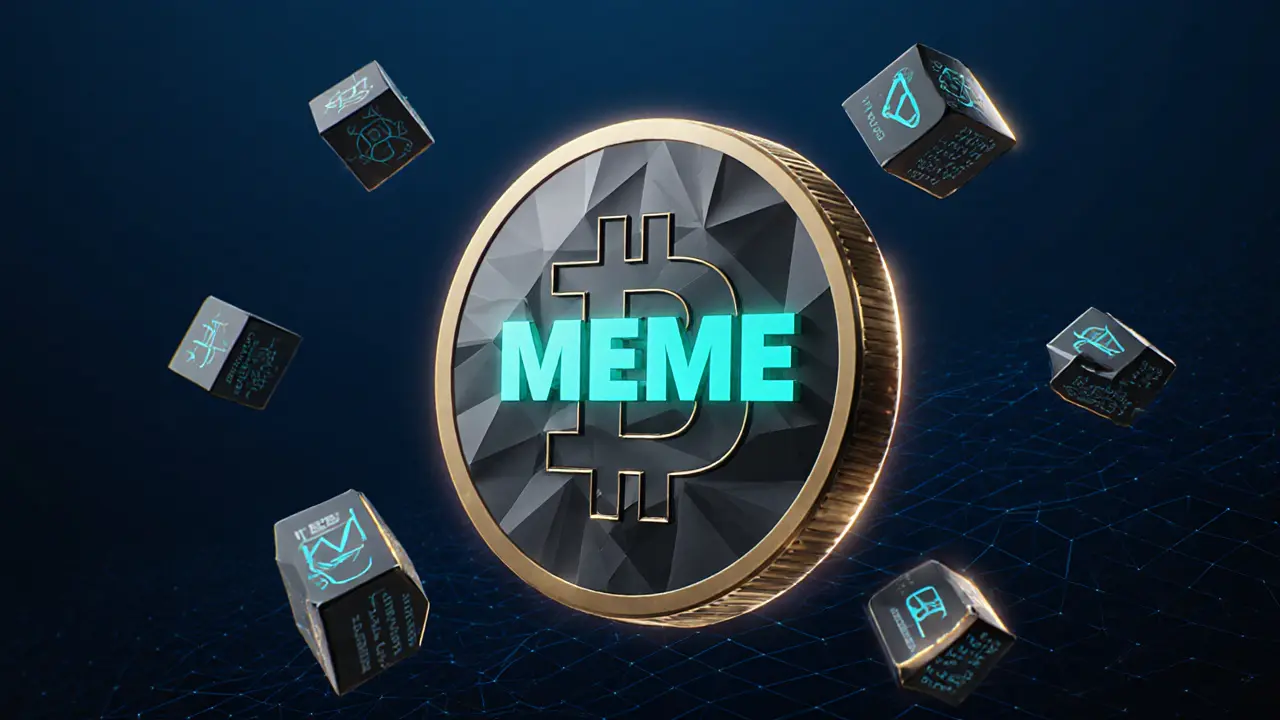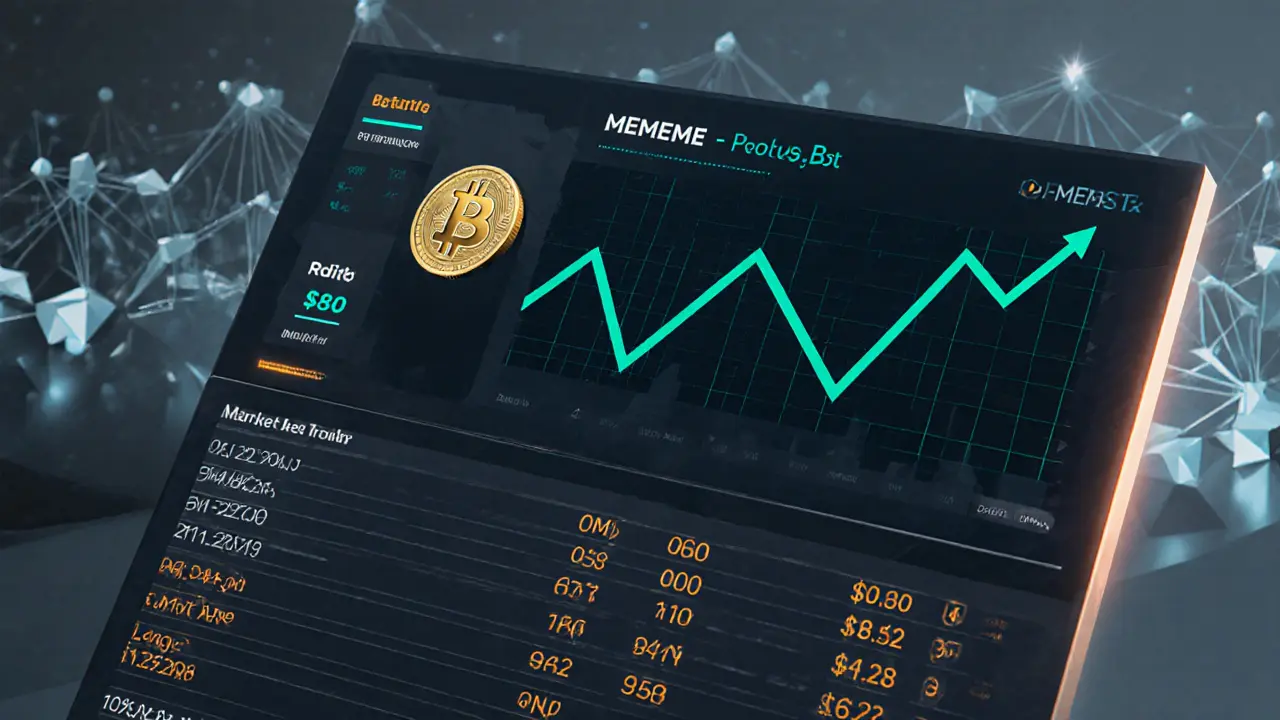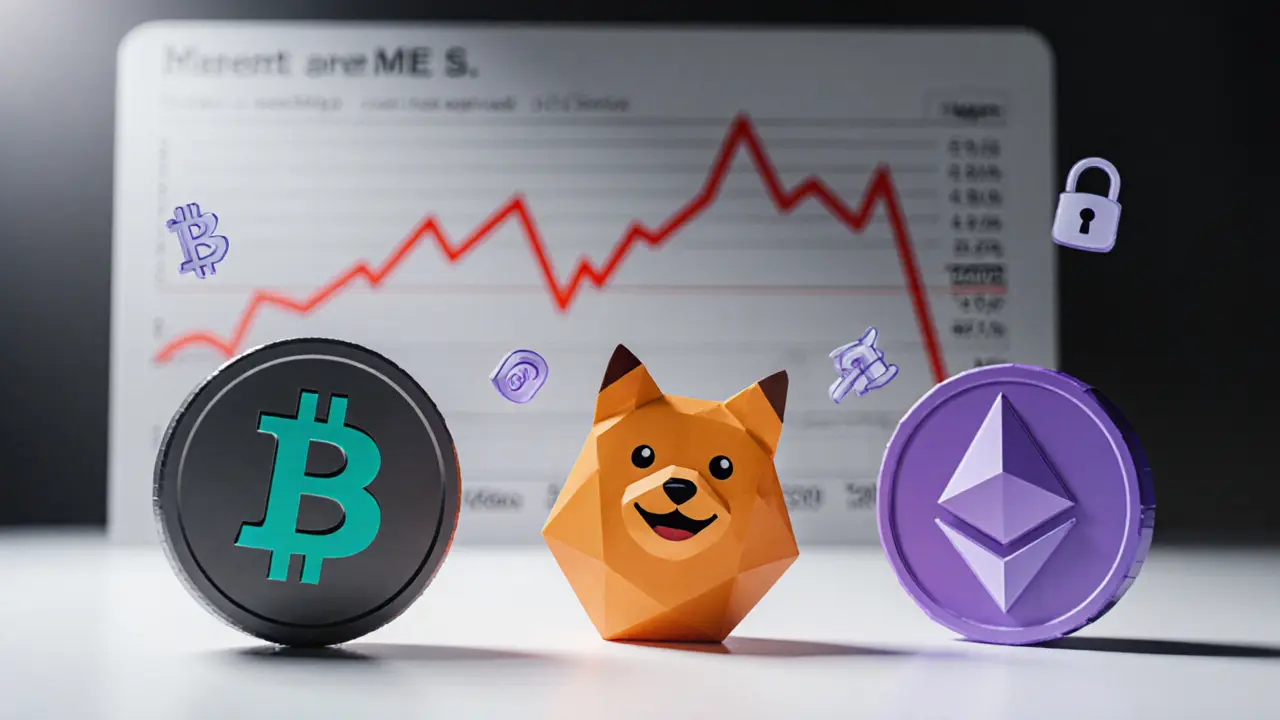What Is MEME (Ordinals) Crypto Coin? A Complete Guide

MEME Transaction Cost Calculator
MEME transactions on Bitcoin use the Ordinals protocol with BRC-20 standard. Unlike Ethereum, fees are paid in Bitcoin and can be significant due to network congestion.
Transaction Fee Estimate
Fee amount: 0.00000000 BTC
Fee value at $9/MEME: $0.00
Fee as percentage of MEME value: 0.00%
Note: The average MEME price is approximately $9 as of October 2025. Actual fees vary based on network congestion.
⚠️ Warning: Your estimated fee is 0% of the MEME value. This could significantly reduce your profit.
Key Takeaways
- MEME (Ordinals) is a Bitcoin‑native meme token built on the BRC‑20 standard.
- It uses the Ordinals protocol, meaning each token lives as a Bitcoin inscription.
- Supply is capped at 99,999 tokens, with roughly 99,861 in circulation.
- Liquidity is thin - most trading happens on UniSat DEX, and fees are paid in Bitcoin.
- Risks include high transaction costs, limited utility, and a volatile price history.
Ever wondered why a meme coin would sit on Bitcoin instead of Ethereum? MEME (Ordinals) (MEME) is a cryptocurrency token that lives on Bitcoin’s Ordinals protocol using the BRC‑20 token standard, designed to bring meme‑coin culture to the Bitcoin blockchain. In plain English, it’s a speculative token that leverages Bitcoin’s security while behaving like the goofy meme assets you’ve seen on other chains. This guide unpacks the tech, tokenomics, market performance, and practical steps to hold or trade MEME, so you can decide whether it’s worth a glance or a full‑blown investment.
Technical Foundations: Bitcoin, Ordinals, and BRC‑20
To grasp MEME you need three building blocks:
- Bitcoin is the world’s first blockchain, offering a proof‑of‑work network that secures over 200 petabytes of transaction data.
- Ordinals protocol lets developers assign a serial number to each satoshi and attach arbitrary data (like JSON) to it, turning a satoshi into a digital artifact.
- BRC‑20 token standard is a convention for encoding token parameters (name, supply, decimals) inside an Ordinals inscription, effectively creating a token without a smart contract.
Because there is no smart contract, MEME’s code can’t be upgraded and all transfers follow Bitcoin’s UTXO model. The upside? You inherit Bitcoin’s massive hash power and network effect. The downside? Every transfer costs a Bitcoin mining fee, typically $5‑$50 depending on block space demand.
Tokenomics: Supply, Distribution, and Fees
MEME’s economics are simple but stark:
- Total supply: 99,999 tokens (hard‑capped, immutable).
- Circulating supply: ~99,861 tokens as of August 2024, meaning only about 138 tokens are locked or burned.
- Price history: All‑time high of $245.52 on 9 May 2023; current range (Oct 2025) sits around $8‑$10.
- Transaction fee structure: Fees are paid in Bitcoin; an inscription typically consumes 0.00002‑0.00015 BTC.
The limited supply creates a perception of scarcity, but thin liquidity means even a small trade can swing the price dramatically. For example, a $65 trade moved the price by over 15 % in a single day (2024).

Market Landscape: Exchanges, Liquidity, and Competition
Unlike Ethereum‑based meme coins that list on dozens of exchanges, MEME lives on a micro‑ecosystem:
- UniSat DEX handles >99.9 % of MEME volume, pairing MEME with BTC at roughly $8.27 per token.
- Gate.io once offered MEME/USDT but is now inactive with no recent trades.
By comparison, DOGE trades on >200 platforms with a 24‑hour volume of $1.7 billion, while SHIB tops $1 billion. MEME’s 24‑hour volume hovers near $410, making price discovery noisy and risky.
How to Acquire and Store MEME
Because MEME isn’t an ERC‑20 token, you can’t stash it in MetaMask. You need a Bitcoin wallet that supports Ordinals:
- Xverse wallet - a mobile app that lets you view and transfer BRC‑20 tokens.
- Leather wallet - a hardware‑based solution with Ordinals support.
Typical purchase flow:
- Fund a Bitcoin address with enough BTC to cover the token cost plus the inscription fee.
- Connect your Ordinals‑compatible wallet to UniSat DEX.
- Swap BTC for MEME using the MEME/BTC pair; confirm the fee before broadcasting.
- After the transaction confirms (usually 10‑30 minutes), the MEME tokens appear in your wallet’s “BRC‑20” tab.
Watch out for fee spikes during network congestion. Unlike Ethereum’s gas‑price estimator, you’ll need to manually set a higher sat‑per‑byte rate if you want a quick confirmation.
Risks, Criticisms, and Regulatory Outlook
Every meme coin carries risk, but MEME adds a few unique ones:
- Liquidity crunch: Thin order books mean price can swing wildly on tiny trades.
- High fees: Bitcoin’s block‑space cost can dwarf the token’s market price.
- No smart‑contract features: The token can’t be upgraded, frozen, or burned programmatically.
- Regulatory gray zone: The SEC hasn’t issued guidance on Ordinals‑based tokens; they could be classified as securities depending on distribution.
Analysts at CoinCodex refuse to give price predictions because historical data is too sparse. Meanwhile, Blockchain App Factory remains optimistic, arguing that as Bitcoin Ordinals proliferate, niche tokens like MEME could ride a wave of collector interest.

Future Outlook: Will MEME Survive?
The long‑term health of MEME ties directly to the broader adoption of the Ordinals ecosystem. If Bitcoin developers add native support for BRC‑20 wallets and layer‑2 solutions reduce fees, MEME could see a liquidity boost. Conversely, community pushback against “blockspace bloat” could lead to protocol changes that limit inscriptions, hurting MEME’s viability.
At present, MEME sits at rank #3,900 by market cap (≈ $1 million). That’s a drop of over 96 % from its 2023 peak. For most investors, MEME is a high‑risk speculative play rather than a store of value.
Comparison Table: MEME vs. Popular Meme Coins
| Token | Blockchain | Total Supply | Market Cap (≈2025) | Typical Fee per Transaction |
|---|---|---|---|---|
| MEME (Ordinals) | Bitcoin (BRC‑20) | 99,999 MEME | $1 M | $5‑$50 (BTC fee) |
| DOGE | Dogecoin (PoW) | 129 Billion DOGE | $14.5 B | ≈ $0.01 |
| SHIB | Ethereum (ERC‑20) | 589 Trillion SHIB | $8.9 B | ≈ $0.03 (ETH gas) |
Frequently Asked Questions
What is MEME (Ordinals) and how is it different from ERC‑20 meme coins?
MEME is a BRC‑20 token inscribed on Bitcoin using the Ordinals protocol. Unlike ERC‑20 meme coins that run on Ethereum’s smart‑contract layer, MEME lives directly on Bitcoin’s blockchain, pays fees in BTC, and lacks programmable features.
Where can I buy MEME?
The primary venue is UniSat DEX, a Bitcoin‑native decentralized exchange. You’ll need a Bitcoin‑compatible wallet (e.g., Xverse) with enough BTC for the token price plus the inscription fee.
Is MEME safe to hold?
Holding MEME is as safe as storing Bitcoin. The risk comes from the wallet you use and the extreme price volatility. Use a reputable Ordinals‑compatible wallet and keep your private keys secure.
Why is MEME’s liquidity so low?
MEME trades almost exclusively on UniSat DEX, which has limited order depth. The niche nature of Bitcoin Ordinals means few traders provide the volume you’d see on larger platforms.
Could MEME be classified as a security?
The SEC has not specifically addressed BRC‑20 tokens. If MEME were sold as an investment with an expectation of profit, regulators could deem it a security, but the legal landscape remains unclear.

Marina Campenni
October 18, 2025 AT 08:14I understand the appeal of experimenting with Bitcoin‑based meme tokens, even if the high fees can be discouraging.
Irish Mae Lariosa
October 30, 2025 AT 07:14MEME (Ordinals) presents a novel concept by embedding a meme token directly onto the Bitcoin blockchain, which is an interesting technical feat. However, the practicality of such a token is immediately called into question by the exorbitant transaction fees that accompany Bitcoin transfers. While the supply is capped at a neatly round 99,999 tokens, the circulating supply of roughly 99,861 means that scarcity is largely superficial. The token’s price history shows a dramatic peak of $245.52 in 2023, but it now hovers around $8‑$10, indicating a severe correction. Liquidity is another major concern, as over 99.9% of trading activity occurs on UniSat DEX, a platform with limited order depth. Thin order books translate to volatile price swings, where even a modest $65 trade can shift the market by more than 15 percent. Acquiring MEME requires a Bitcoin‑compatible wallet that supports Ordinals, such as Xverse or the Leather hardware wallet, adding another layer of friction for the average user. Moreover, every transaction consumes Bitcoin block space, resulting in fees ranging from $5 to $50, which can dwarf the token’s market value. From an investment perspective, the lack of smart‑contract functionality means MEME cannot be upgraded, frozen, or burned programmatically, limiting its flexibility. The regulatory environment remains murky, with the SEC yet to issue clear guidance on BRC‑20 tokens, potentially exposing holders to future legal risks. In summary, while MEME showcases Bitcoin’s expanding capabilities, the combination of high fees, low liquidity, and uncertain regulatory standing makes it a high‑risk speculative asset.
Nick O'Connor
November 11, 2025 AT 07:14MEME’s tokenomics are simple, the supply is capped at 99,999, the circulation hovers near 99,861, and the fee structure is paid in Bitcoin, which means each transfer incurs a variable sat‑per‑byte cost, often ranging from $5 to $50, depending on network congestion.
Bobby Lind
November 23, 2025 AT 07:14It’s fascinating to see the Ordinals ecosystem grow; if layer‑2 solutions reduce fees, MEME could attract more traders, and who knows-maybe we’ll witness a resurgence in its market cap!
Jessica Cadis
December 5, 2025 AT 07:14While some dismiss MEME as a novelty, it actually showcases Bitcoin’s versatility beyond just a store of value, highlighting how diverse communities can embed culture directly onto the world’s most secure blockchain.
Katharine Sipio
December 17, 2025 AT 07:14From a prudent investment standpoint, it is advisable to allocate only a modest portion of your portfolio to MEME, ensuring that the potential for high volatility does not jeopardize your overall financial stability.